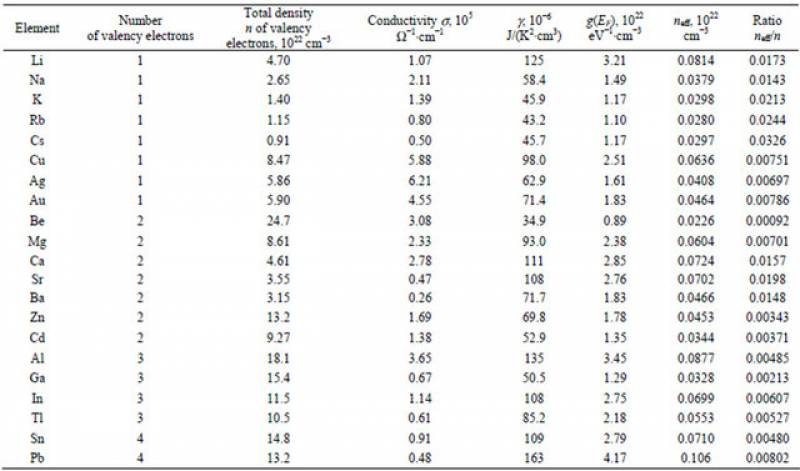This is an old revision of the document!
Example: Drift Speed in Different Types of Wires
Suppose you have a two wires. Each has a current of $5 \text{ A}$. One is made of copper (Cu) and has radius $0.5 \text{ mm}$. The other is made of zinc (Zn) and has radius $0.1 \text{ mm}$. What is the drift speed of electrons in each wire? You may want to consult the table below.
Facts
- The copper wire has $I=5 \text{ A}$, $r = 0.5 \text{ mm}$.
- The zinc wire has $I=5 \text{ A}$, $r = 0.1 \text{ mm}$.
- The charge of an electron is $q=-1.6\cdot 10^{-19} \text{ C}$.
Lacking
- Drift speed for both wires.
- Electron charge density for both wires.
- Electron current for both wires.
Approximations & Assumptions
- The table is accurate for our wires.
- The wires have circular cross-sections.
- The wires do not experience any external electric field.
Representations
- We represent electron current as $i=nAv_{avg}$.
- We represent current as $I=qi$. Current is charge per second. Electron current is electrons per second. We multiply by $q$ (the electron charge) to get charge per second.
Solution
We can look up electron density $n$ in the table. It is labeled as “density of valency electrons”, which to us just means the density of free electrons, or electrons that are free to drift through the wire. For copper, we get $n_{\text{Cu}}=8.47\cdot 10^{22} \text{ cm}^{-3}$. For zinc, we get $n_{\text{Zn}}=13.2\cdot 10^{22} \text{ cm}^{-3}$.
To find the cross-sectional area of the wire, we just use the area of a circle. We know the radius, so this should be easy: $A=\pi r^2$.
